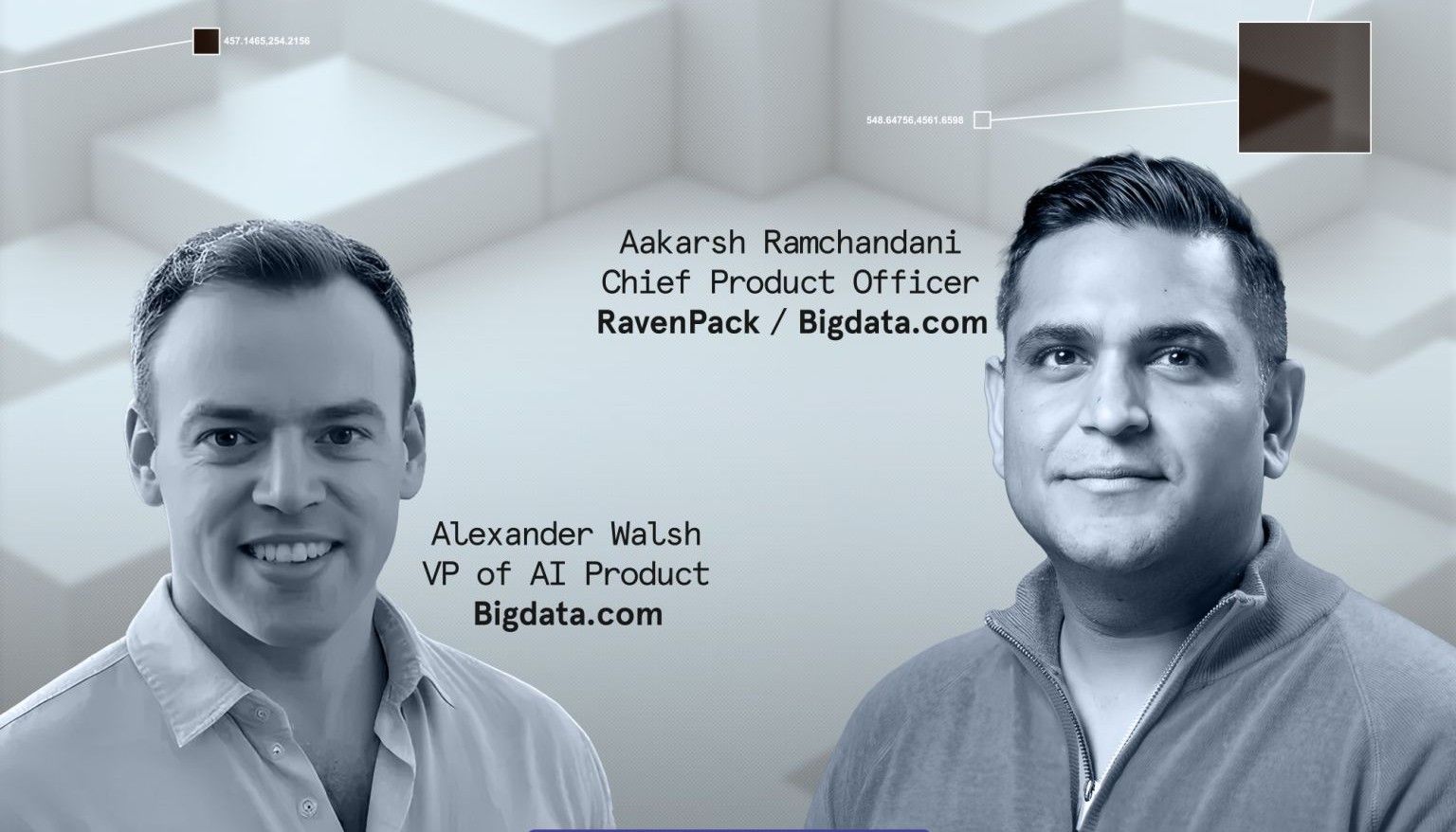Webinar: Building financial AI agents
July 2025•Bigdata.com team
Bigdata.com’s Chief Product & Strategy Officer and VP of AI Product share practical strategies to build scalable, production-grade financial AI agents.
Originally aired live on Wednesday, July 9
In this hands-on technical webinar, Bigdata.com’s Chief Product & Strategy Officer Aakarsh Ramchandani and VP of AI Product Alexander Walsh shared how to move beyond demo-quality AI to build scalable, production-grade financial agents that integrate seamlessly with your existing infrastructure.
Whether you're a developer, AI/ML engineer, CTO, or product manager, this session equips you with practical strategies to build compliant, enterprise-ready AI systems for financial intelligence.
What you’ll learn
During the session, our team demonstrated how to:
- Leverage the Foundation Search API - Perform entity-resolved financial search across 12 million+ entities, combining premium reference data with robust audit trails for compliance and transparency.
- Integrate with Model Context Protocol (MCP) - Connect Bigdata.com’s capabilities directly into your AI toolchains to enhance your models with high-quality, structured financial intelligence.
- Build autonomous research agents - Develop multi-step research agents capable of deep financial investigations with entity resolution and cross-document analysis – enabling your teams to make faster, more confident
Meet the speakers

Aakarsh Ramchandani, Chief Product & Strategy OfficerAakarsh has spent over a decade building search systems for unstructured financial data and trading systems at top hedge funds. At Bigdata.com, he focuses on solving the core challenges of financial search and analysis at scale.
Alexander Walsh, VP of AI ProductAlex brings more than 10 years of investment management experience across sell-side and buy-side roles, now applying his expertise to create powerful AI tools for finance professionals.
Watch the webinar recording
Explore key resources
Ready to start building?
To run the examples and code shown in the webinar, you’ll need Bigdata API credentials. If you’re ready to get started, you can request developer access below.